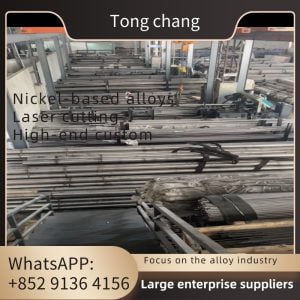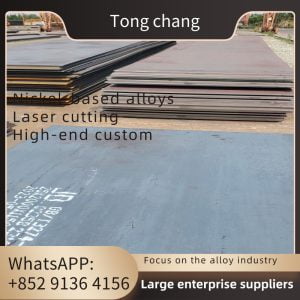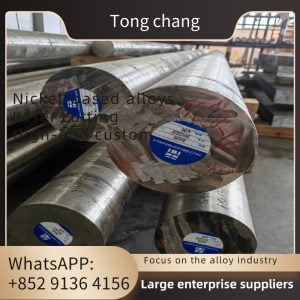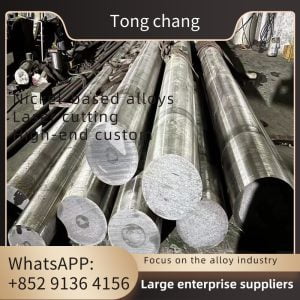| Type: | Wound L Type Fin Tube | Standard: | ASTM |
|---|---|---|---|
| Material Grade: | Duplex Steel/Carbon Steel | Fin Material: | Aluminum,carbon Steel,stainless Steel |
| High Light: | Heat Exchanger L Type Fin Tube, Boiler L Type Fin Tube, ASTM Wound Type Finned Tube | ||
Wound L Type Finned Tube for Heat Exchanger
L type fin tube is a type of heat exchanger tube that is used in various industries like petrochemical, power generation, and heating & cooling applications. The 'L' in its name refers to the shape of the fins that are attached to the tube. These fins are rectangular in shape and are attached at a 90-degree angle to the tube, giving it an 'L' shape. This design increases the tube's surface area, thereby improving its heat transfer efficiency. The tubes are typically made from materials like copper, aluminium, or stainless steel, depending on the specific requirements of the application.
KL Type Finned Tube for Heat Exchanger
KL type finned tube is a kind of knurled finned tube. Before winding the fins, knurl patterns on the base tube, or add a blade to the winder, knurl on the base tube, and use the back blade A finned tube made by winding, knurling and winding at the same time.
The KL Type Finned Tube relies on maximum surface contact between the fins and the tube, which is ensured by the tension of the fin strips helically forming around the pre-knurled tube, providing improved bonding and heat transfer. The maximum working temperature of KL Type Finned Tube can reach 250°C, and the maximum working pressure can reach 3.2MPa.
LL Type Finned Tube for Heat Exchanger
Type LL finned tube is a finned tube in which the fin feet are preformed into an LL shape (overlapping LLs) and a strip of aluminum fins or copper fins is applied to the base tube under tension. However, the feet are pre-formed so that one foot overlaps the other, increasing the base tube protection and thermal contact area of the finned tube. LL Type Finned Tube is usually used in steam coils, air pre-heaters., the maximum operating temperature can reach 180 °C.
The "LL" shaped fin design features interlocking fins that are twisted together to prevent movement and separation. The fins protect the entire tube, the smooth flat fins with "LL" shaped fins perpendicular to the surface of the seamless steel tube tube provide very low resistance to air/gas flow and ensure that fouling is kept to a minimum. The bottom of the fin is in contact with the base tube and provides a complete jacket over the length of the fin. Hence the name applies to applications where corrosion is a factor. This LL Type Finned Tube is often used as a replacement for more expensive extruded fins in corrosive environments.
Advantages
Transferring heat from a hot fluid into a colder fluid through a tube wall is the reason many of us use finned tubes.
But you may ask, what is the major advantage of using a finned tube? Why can’t you just use a regular tube to make this transfer? Well you can but the rate will be much slower.
By not using a finned tube the outside surface area is not significantly greater than the inside surface area. Because of that, the fluid with the lowest heat transfer coefficient will dictate the overall heat transfer rate. When the heat transfer coefficient of the fluid inside the tube is several times larger than that of the fluid outside the tube the overall heat transfer rate can be greatly improved by increasing the outside surface area of the tube.
Finned tubes increase outside the surface area. By having a finned tube in place, it increases the overall heat transfer rate. This then decreases the total number of tubes required for a given application which then also reduces overall equipment size and can in the long-run decrease the cost of the project. In many application cases, one finned tube replaces six or more bare tubes at less than 1/3 the cost and 1/4 the volume.
For applications that involve the transfer of heat from a hot fluid to a colder fluid through a tube wall, fin tubes are used. Usually, for an air heat exchanger, where one of the fluids is air or some other gas, the air side heat transfer coefficient will be much lower, so additional heat transfer surface area or a fin tube exchanger is very useful. The overall pattern flow of a finned tube exchanger is often crossflow, however, it can also be parallel flow or counterflow.
Fins are used to increase the effective surface area of heat exchanger tubing. Furthermore, finned tubes are used when the heat transfer coefficient on the outside of the tubes is appreciably lower than that on the inside. In other words, heat transferred from liquid to gas, vapor to gas, such as steam to air heat exchanger, and thermic fluid to air heat exchanger.
The rate at which such heat transfer can occur depends on three factors – [1] the temperature difference between the two fluids; [2] the heat transfer coefficient between each of the fluids and the tube wall; and [3] the surface area to which each fluid is exposed.
| Type | Description | Base tube | Fin specification (mm) | ||
| O.D. (mm) | Fin pitch | Fin height | Fin thick | ||
| Embedded | G-type fin tueb | 16-63 | 2.1-5 | <17 | ~0.4 |
| Extruded | Single metal combined metal | 8-51 | 1.6-10 | <17 | 0.2-0.4 |
| Low fin tube t-type fin tube | 10-38 | 0.6-2 | <1.6 | ~0.3 | |
| Bamboo tube corrugated tube | 16-51 | 8月30日 | <2.5 | / | |
| Wound | l/kl/ll type fin tube | 16-63 | 2.1-5 | <17 | ~0.4 |







